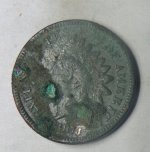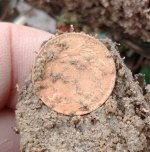Here is a hypothetical situation: a 17th century Spanish treasure galleon of 300 tons is heading due north (360 deg.) in the Bahama Channel at 8 knots under a fresh breeze from the southeast (135 deg.). The wind increases alarmingly and rounds to the east (90 deg). The seas build quickly so that the ship can no longer point due north, but must "lie to" to avoid taking the swells on its beam. It takes on a heading of 30 deg. The ship is being overtaken by a tropical cyclone also heading due north. The cyclone is a fairly typical one, with tropical storm force winds extending out 150 miles from its center. The forward momentum of the storm is normal for one in the Bahama Channel: around 15 knots. The storm is 150 miles south and 30 miles east of our ship's position. The winds will remain at 90 deg, but build throughout the coming hours. For arguments sake, lets say they average 60 knots.
The ship is heading at 30 deg. but, obviously, is not actually travelling in that direction. It is undergoing a tremendous amount of leeway.
What will be the direction of its "course made good"? What speed will it travel? It will be carrying as little sail as possible, obviously. It can not change direction. It can not "scud" or "run" because it is on a lee shore and to do so would be suicidal. I am not looking for specific answers, of course. Just general ideas on how a ship of this era would perform in such conditions.
The ship is heading at 30 deg. but, obviously, is not actually travelling in that direction. It is undergoing a tremendous amount of leeway.
What will be the direction of its "course made good"? What speed will it travel? It will be carrying as little sail as possible, obviously. It can not change direction. It can not "scud" or "run" because it is on a lee shore and to do so would be suicidal. I am not looking for specific answers, of course. Just general ideas on how a ship of this era would perform in such conditions.
Last edited:





